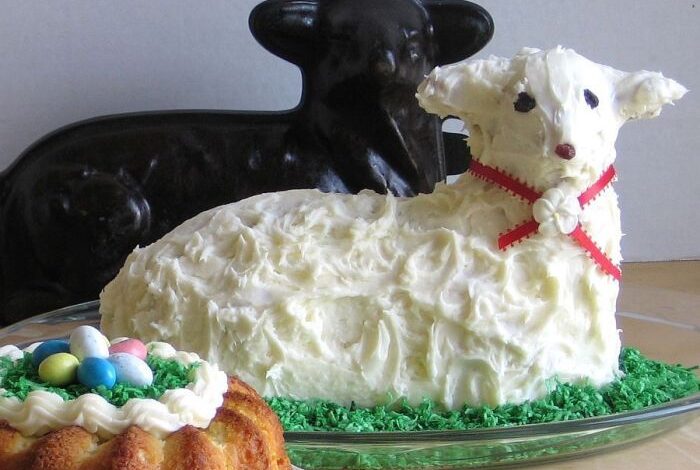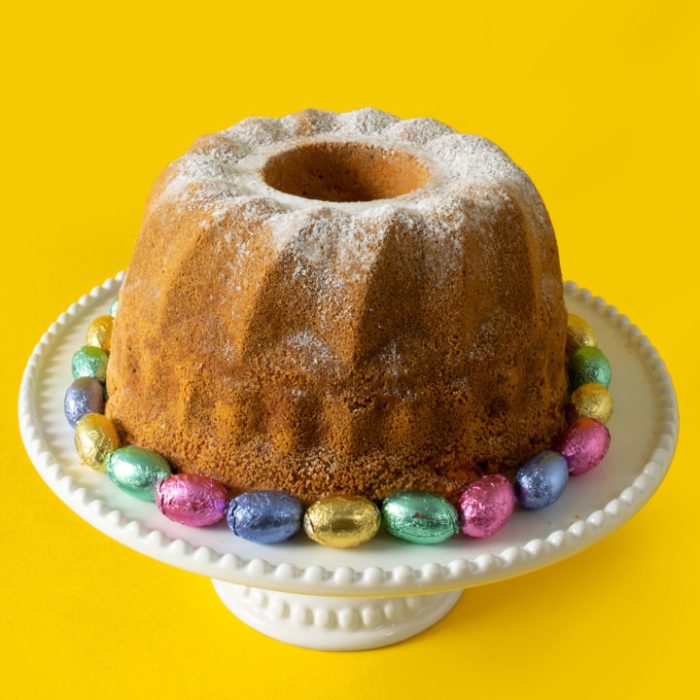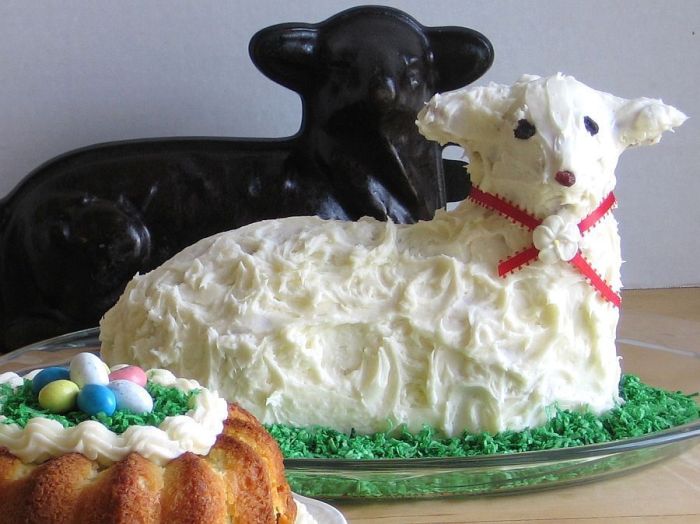
Mazurek Polish Easter Cake: A Sweet Tradition
Mazurek Polish Easter Cake, a delightful treat steeped in tradition, is more than just a dessert; it’s a symbol of family, faith, and the joy of springtime. This beloved cake has been a staple of Polish Easter celebrations for centuries, its history interwoven with the cultural tapestry of the nation.
From its humble origins to its modern-day variations, Mazurek embodies the spirit of Polish Easter, a time for renewal, reflection, and sharing delicious treats with loved ones. This blog post will explore the fascinating history, ingredients, and cultural significance of this iconic cake, taking you on a journey through the heart of Polish Easter traditions.
Mazurek

Mazurek, a traditional Polish Easter cake, is more than just a sweet treat; it embodies the spirit of the holiday and carries a rich history intertwined with Polish culture. This article delves into the historical significance, cultural importance, and fascinating evolution of this beloved Easter tradition.
Historical Significance of Mazurek in Polish Easter Celebrations
The origins of Mazurek can be traced back to the 16th century, where it was initially enjoyed by the Polish aristocracy. This pastry was a symbol of prosperity and abundance, reflecting the importance of the Easter holiday in Polish society.
Mazurek’s historical significance lies in its connection to the celebration of the resurrection of Jesus Christ, symbolizing hope, renewal, and the arrival of spring.
Cultural Importance of Mazurek in Polish Families and Communities
Mazurek plays a central role in Polish Easter celebrations, serving as a centerpiece on Easter tables across the country. It’s a tradition passed down through generations, uniting families and communities around a shared culinary heritage. The preparation of Mazurek often involves families working together, sharing stories, and creating lasting memories.
In addition to its role in Easter celebrations, Mazurek is also a symbol of Polish identity, representing the country’s culinary traditions and cultural heritage.
Mazurek, the Polish Easter cake, is a rich and crumbly treat, often adorned with a colorful assortment of decorations. It’s the perfect ending to a celebratory Easter meal, and for a truly decadent experience, try serving it alongside a scoop of homemade cherry ice cream, like the one you can find on this website.
The tangy sweetness of the cherry ice cream complements the buttery, nutty flavors of the mazurek beautifully, creating a truly unforgettable dessert experience.
Origins of the Mazurek Tradition and Its Evolution Over Time, Mazurek polish easter cake
The Mazurek tradition has evolved over time, adapting to changing ingredients and culinary trends. Initially, Mazurek was made with simple ingredients like flour, butter, sugar, and eggs. However, as time passed, the recipe evolved to include more complex ingredients, such as dried fruits, nuts, and spices.
The earliest versions of Mazurek were often decorated with simple designs, but as time passed, the decoration became more elaborate, featuring intricate patterns, floral motifs, and even religious symbols. This evolution reflects the changing tastes and preferences of Polish society, as well as the increasing importance of Mazurek as a symbol of Easter celebration.
Mazurek, the Polish Easter cake, is a beautiful and delicious tradition that brings families together. It’s a reminder that Easter is a time for celebration and sharing, just like a good meal. And speaking of good meals, I’m craving some tender, fall-off-the-bone ribs – maybe I’ll try those slow cooker baby back ribs I saw online.
Once I’m done indulging, I’ll be back to enjoying the sweet, nutty flavors of Mazurek, a perfect ending to a perfect Easter feast.
Mazurek Variations and Styles

Mazurek, the traditional Polish Easter cake, is not just one type of dessert but a family of sweet treats, each with its unique flavor profile and decorative style. While the basic recipe of a buttery, flaky crust remains consistent, the toppings and fillings are where the variations truly shine, offering a delicious and visually stunning array of choices.
Almond Mazurek
Almond Mazurek is a classic and elegant variation, known for its delicate almond filling and its often intricate decorations. The almond paste, typically made with ground almonds, sugar, and egg whites, is spread over the cooled crust and then decorated with intricate patterns using almond paste itself, candied fruit, or even chocolate.
The resulting Mazurek is a symphony of textures, with the crisp crust giving way to the smooth, subtly sweet almond filling, while the decorative elements add a touch of visual artistry.
A traditional Almond Mazurek is often decorated with a pattern of almond paste, resembling a floral motif or geometric design.
Poppy Seed Mazurek
Poppy seed Mazurek, another popular variation, offers a more robust and earthy flavor profile. The filling is typically made with poppy seeds, sugar, and sometimes milk or cream, creating a rich and slightly tangy spread. The poppy seed filling is often topped with a glaze or icing, adding a touch of sweetness and shine.
The decorative elements for this type of Mazurek can range from simple, like a dusting of powdered sugar, to more elaborate, using candied fruit, nuts, or even chocolate.
A poppy seed Mazurek is often topped with a glaze or icing, creating a beautiful, glossy finish.
Chocolate Mazurek
Chocolate Mazurek is a decadent variation that satisfies the sweet tooth. The crust is often enriched with cocoa powder, while the filling is a rich chocolate ganache, made with chocolate and cream. The chocolate filling is then often decorated with chocolate shavings, chocolate swirls, or even chocolate candies, creating a luxurious and indulgent dessert.
A chocolate Mazurek is a decadent dessert that is perfect for those who love chocolate.
Decorating Techniques: Mazurek Polish Easter Cake
Mazurek, a traditional Polish Easter cake, is not just a culinary delight but also a canvas for artistic expression. The intricate decorations adorning these cakes are a testament to Polish artistry and cultural significance.
Traditional Decorative Elements
The traditional decorative elements of Mazurek are as much a part of its heritage as its recipe. These elements, often representing nature and abundance, add both visual appeal and symbolic meaning to the cake.
Mazurek, the Polish Easter cake, is a rich and decadent treat, often featuring almonds, dried fruit, and a buttery, flaky crust. It’s a delicious centerpiece for any Easter celebration, but sometimes, you want something lighter and fresher alongside it.
A simple side dish like easy green beans with cream cheese provides a welcome contrast, with its creamy texture and bright, vegetal flavor. After all, a good Easter feast should offer something for everyone!
- Candied Fruits: These colorful additions, such as cherries, apricots, and citrus peels, symbolize the bounty of nature and the arrival of spring.
- Nuts: Almonds, walnuts, and hazelnuts, often arranged in intricate patterns, represent prosperity and good fortune.
- Sugar Decorations: These delicate embellishments, crafted from sugar paste or fondant, can range from simple geometric shapes to elaborate floral designs. They symbolize sweetness and the joy of the holiday.
Symbolism of Decorative Motifs
Beyond their aesthetic appeal, the decorative motifs on Mazurek hold deep cultural significance.
- Floral Motifs: Roses, lilies, and other floral patterns represent the rebirth of nature and the promise of new beginnings.
- Geometric Patterns: Geometric shapes, such as squares, circles, and triangles, often symbolize order, harmony, and the interconnectedness of life.
- Religious Symbols: In some regions, Mazurek may feature religious symbols like crosses or doves, signifying faith and devotion.
Decorative Techniques
A variety of techniques are employed to create the intricate decorations on Mazurek.
| Technique | Description | Symbolism |
|---|---|---|
| Piping | Using a pastry bag and various tips to create intricate designs with icing or fondant. | Precision, artistry, and the delicate beauty of nature. |
| Sprinkling | Sprinkling colorful sprinkles, nuts, or candied fruits onto the cake’s surface. | Abundance, joy, and the celebration of life. |
| Marzipan Modeling | Using marzipan to create three-dimensional figures or decorations. | Creativity, craftsmanship, and the ability to transform simple ingredients into works of art. |
| Sugar Painting | Using food-grade paints to create detailed designs on the cake’s surface. | Artistic expression, creativity, and the ability to capture the beauty of the natural world. |
Modern Interpretations
While the traditional Mazurek recipe and decorating techniques have remained largely unchanged for centuries, modern bakers are pushing the boundaries of this classic Easter treat, creating innovative variations that reflect contemporary tastes and trends. This evolution is not just about reinventing the recipe; it’s about reinterpreting the spirit of the Mazurek and adapting it to a new generation of pastry lovers.
Innovative Flavors and Ingredients
Modern Mazurek recipes often incorporate unconventional flavors and ingredients, drawing inspiration from global cuisines and contemporary culinary trends.
- Citrus and Spices:Lemon, orange, and grapefruit zest add a vibrant citrusy note, while warming spices like cardamom, ginger, and cinnamon create a complex depth of flavor.
- Exotic Fruits:Mango, passionfruit, and guava add a tropical twist to the traditional Mazurek, offering a refreshing and unexpected contrast to the rich almond filling.
- Dark Chocolate and Coffee:For a more decadent and sophisticated flavor profile, bakers incorporate dark chocolate, espresso powder, or even coffee liqueur into the filling or glaze.
- Nuts and Seeds:Beyond the traditional almond filling, modern Mazurek variations often feature other nuts like pecans, pistachios, or walnuts, along with seeds like sunflower or poppy seeds, adding texture and flavor.
Modern Mazurek Designs
The visual appeal of the Mazurek is equally important, and modern bakers are reimagining traditional designs with contemporary aesthetics.
- Geometric Patterns:Clean lines and geometric shapes, inspired by modern art and architecture, replace the traditional floral motifs. Think bold stripes, checkerboards, or abstract patterns.
- Minimalist Designs:Simple, elegant designs emphasize the natural beauty of the ingredients, with minimal decorations and a focus on texture and color.
- 3D Elements:Sculpted sugar flowers, intricate chocolate decorations, and edible paint techniques add a touch of artistry and dimension to the Mazurek.
Impact of Modern Trends
Modern trends have significantly impacted the Mazurek tradition, influencing both the recipe and the presentation.
- Healthier Options:Increasing awareness of health and wellness has led to the development of lighter, healthier versions of the Mazurek, using less sugar and incorporating whole grains or alternative sweeteners.
- Vegan and Gluten-Free Variations:To cater to dietary restrictions, bakers are creating vegan and gluten-free Mazurek recipes, using plant-based ingredients and gluten-free flours.
- DIY and Customization:The rise of social media and online platforms has fostered a culture of DIY and customization, encouraging home bakers to experiment with their own unique Mazurek designs and flavors.
Mazurek in Contemporary Polish Culture
The Mazurek, a traditional Polish Easter cake, remains a cherished symbol of Polish heritage and cultural identity in modern times. It continues to play a vital role in Polish celebrations and family gatherings, evoking a sense of tradition and togetherness.
The Mazurek’s Role in Modern Polish Celebrations
The Mazurek’s presence at Easter celebrations in Poland is a testament to its enduring popularity. It’s a centerpiece on Easter tables across the country, serving as a reminder of the holiday’s significance and the joy of family reunions. Many families have their own cherished recipes passed down through generations, adding a personal touch to this festive treat.
The Mazurek is also often enjoyed at other special occasions, including weddings, christenings, and birthdays, further solidifying its place in Polish culture.
The Mazurek as a Symbol of Polish Heritage
The Mazurek’s historical roots run deep, dating back centuries in Poland. Its presence in Polish cuisine is a testament to the country’s rich culinary traditions and the enduring influence of these traditions on contemporary Polish culture. The Mazurek’s enduring popularity reflects its ability to connect generations, reminding them of their shared heritage and the traditions that bind them together.
Personal Anecdotes and Stories
The Mazurek holds a special place in the hearts of many Polish families. Many have cherished memories of baking the Mazurek with loved ones, sharing in the joy of creating this traditional treat. Some families have passed down recipes through generations, each iteration adding a unique twist to the original recipe.
The Mazurek has become more than just a cake; it’s a symbol of family, tradition, and shared experiences. It’s a reminder of the importance of preserving cultural heritage and passing it down to future generations.

